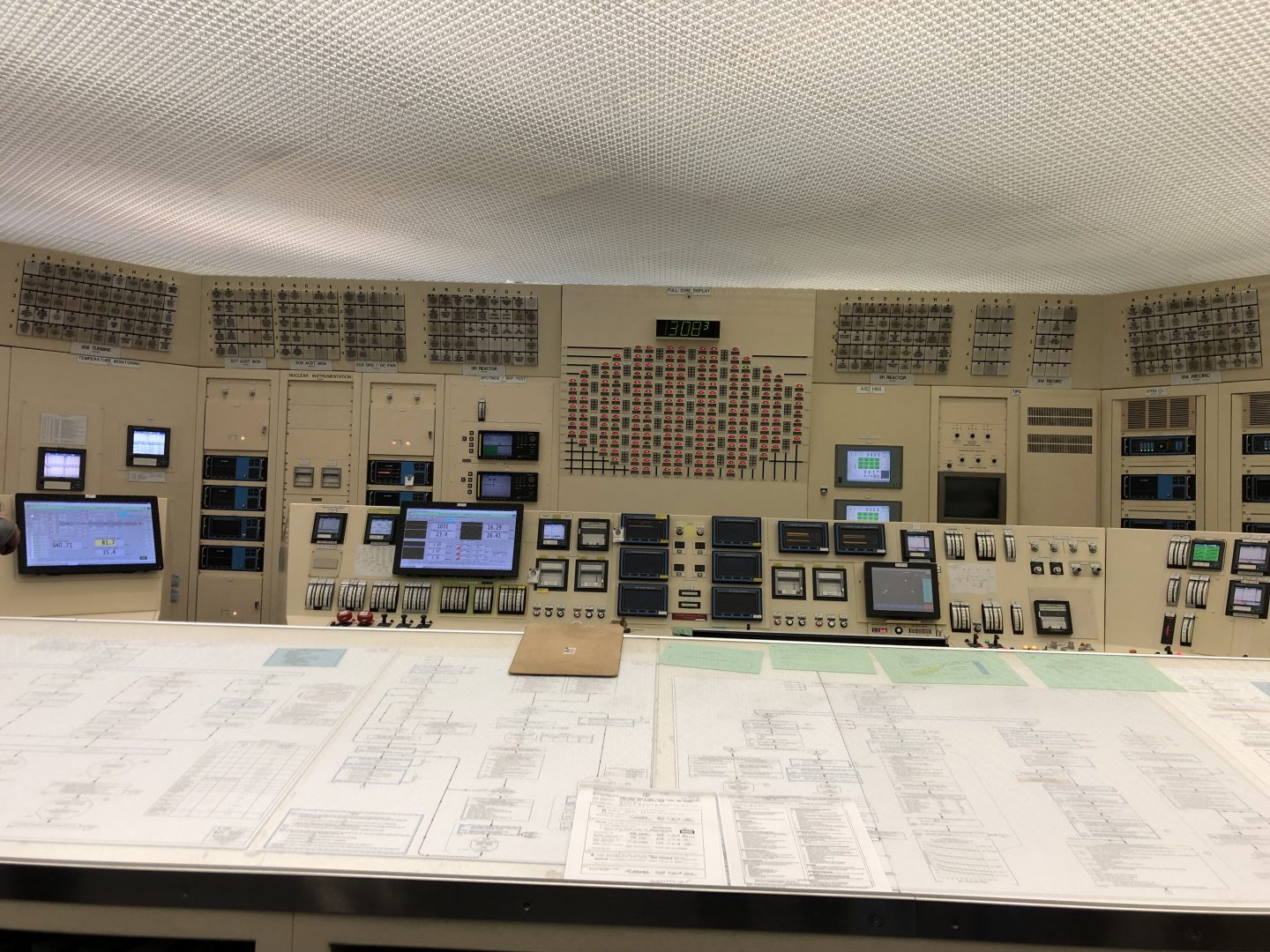
The control room at Peach Bottom Atomic Power Station is seen on Feb. 19, 2019.
Ed Mahon / PA Post

The control room at Peach Bottom Atomic Power Station is seen on Feb. 19, 2019.
Ed Mahon / PA Post

Ed Mahon / PA Post
The control room at Peach Bottom Atomic Power Station is seen on Feb. 19, 2019.
The Three Mile Island nuclear power plant might close down this year.
But about 50 miles south, operators of another nuclear power station hope to stay in business until at least 2053.
The Peach Bottom Atomic Power Station sits in a rural part of southern York County amid farms and tiny towns. Like Three Mile Island, it’s on the Susquehanna River — these plants need a lot of water.
Peach Bottom’s two active nuclear reactors began operating in 1974. Originally, the reactors each had a license to last 40 years. Those licenses were later renewed for another 20 years.
The license for one of its boiling water reactors is set to expire in 2033, while the other is set to expire in 2034.
Now, the plant is among the first in the nation to seek a second license renewal.
“There’s a lot of life left in places like this,” said Matt Wald, a spokesman for the Nuclear Energy Institute, a trade association that advocates for nuclear power.
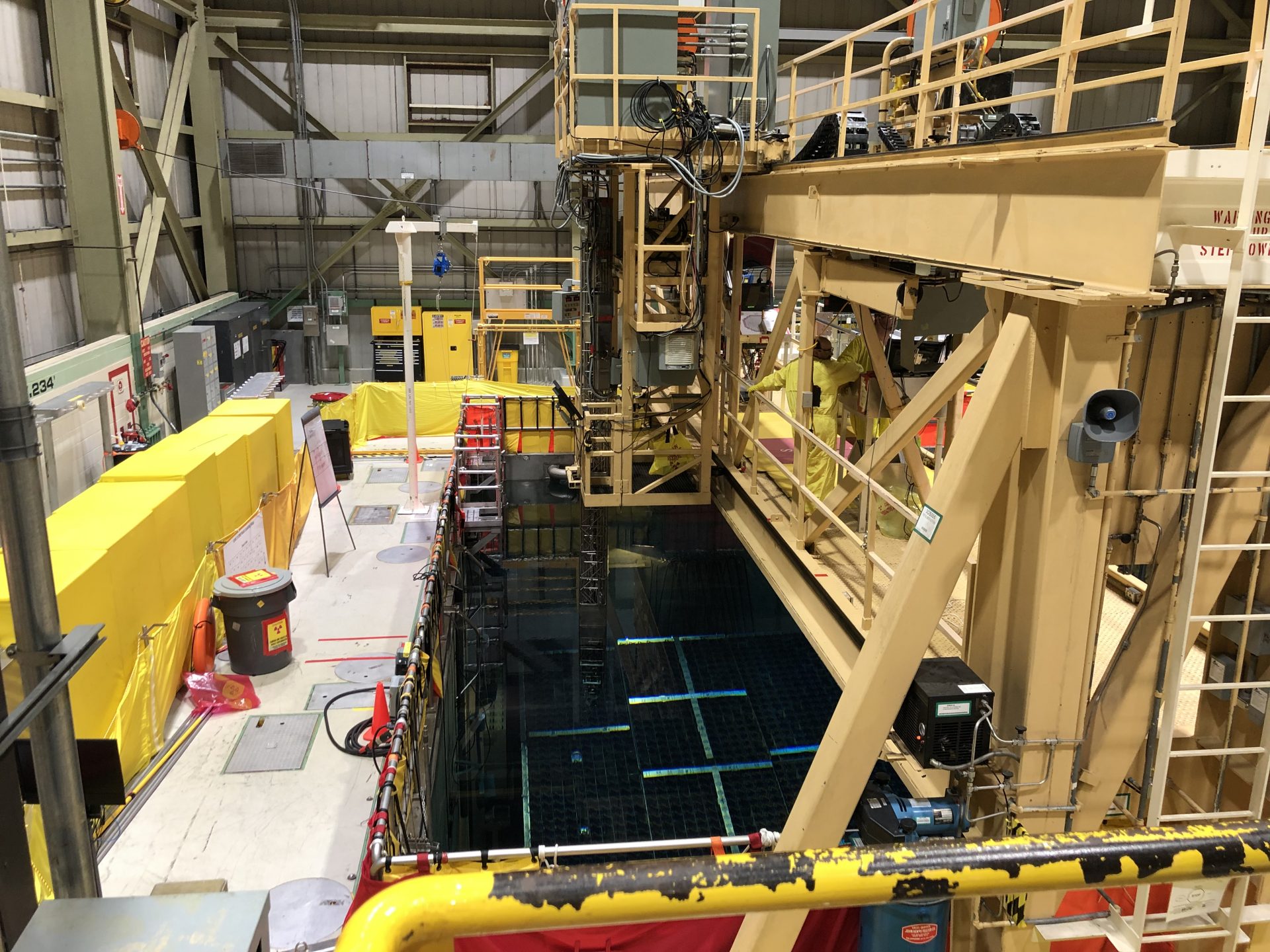
Ed Mahon / PA Post
A storage pool for spent fuel is seen at Peach Bottom Atomic Power Station on Feb. 19, 2019. The pool has about 280,000 gallons of water.
With that license renewal looming, Wald and officials from Exelon organized a media tour of the Peach Bottom nuclear plant on Tuesday.
Exelon owns both the Peach Bottom plant and Three Mile Island’s active reactor. It also owns a third Pennsylvania plant: Limerick Generating Station in Montgomery County.
During most of Tuesday’s tour, Exelon officials focused on how the Peach Bottom plant benefits consumers, workers, people in the community and, more broadly, the environment. Nuclear power reactors don’t produce direct air pollution or carbon emissions while operating.
There are environmental trade-offs. The possibility of a disaster looms large in the nuclear debate, although officials in the nuclear industry stress all the safety precautions and regulations that exist.
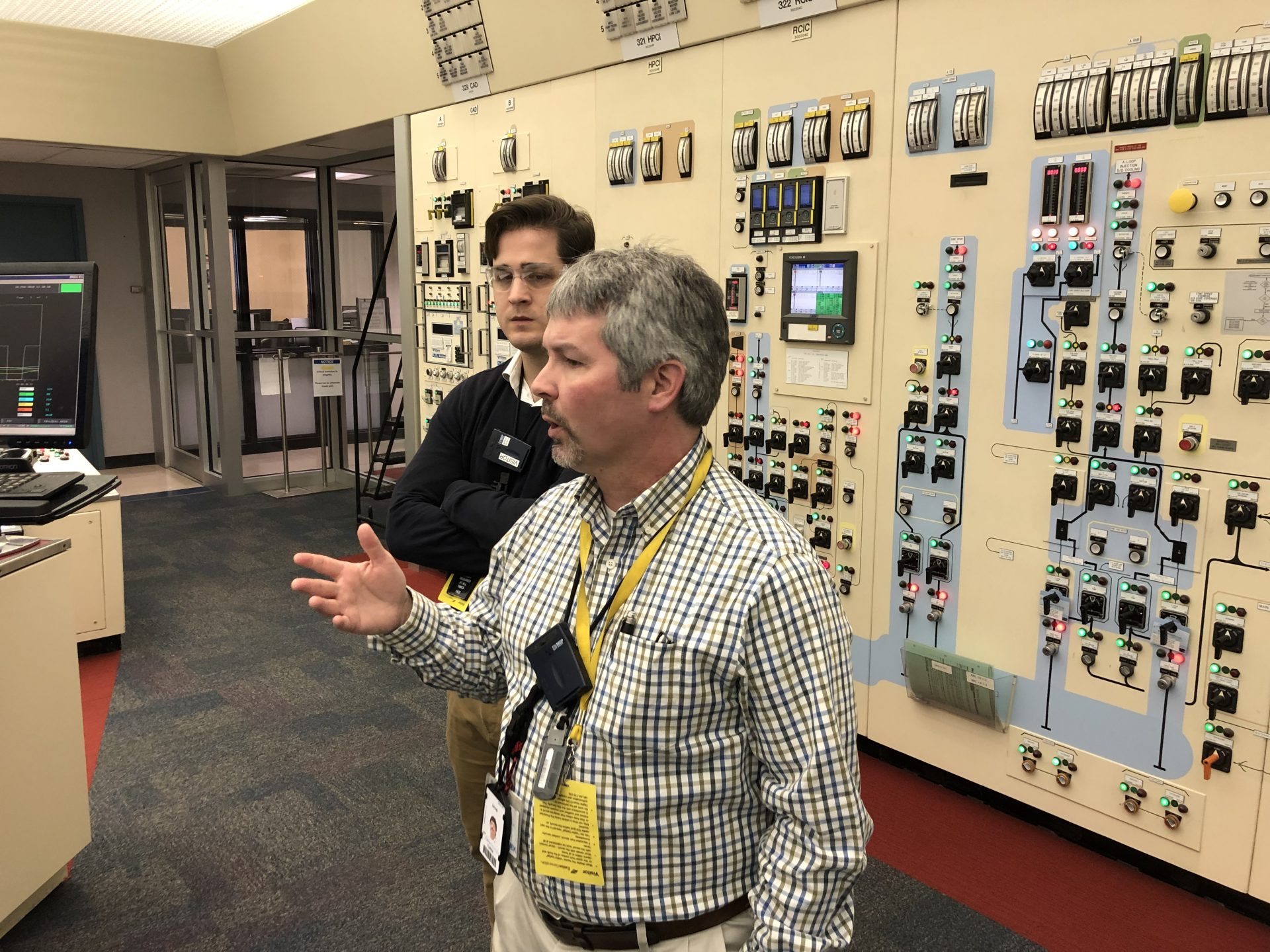
Ed Mahon / PA Post
David Turek, who is responsible for security training and emergency preparedness at Peach Bottom Atomic Power Station, is seen in the control room on Feb. 19, 2019.
There’s also the question of where to store radioactive waste.
Plans to send spent nuclear fuel from Peach Bottom and other plants to Nevada’s Yucca Mountain have been “stuck in legislative gridlock,” said Patrick Navin, site vice president for Peach Bottom.
That has led Peach Bottom to store its spent fuel on site.
Right now, there are 89 large white containers that store spent fuel on a Peach Bottom storage pad. That storage pad has space for 92 containers.
On Tuesday, construction crews were at work, drilling and digging to create a flat space to store more of those containers. That project is scheduled to be completed by 2020, and it would create enough space to last until 2034.
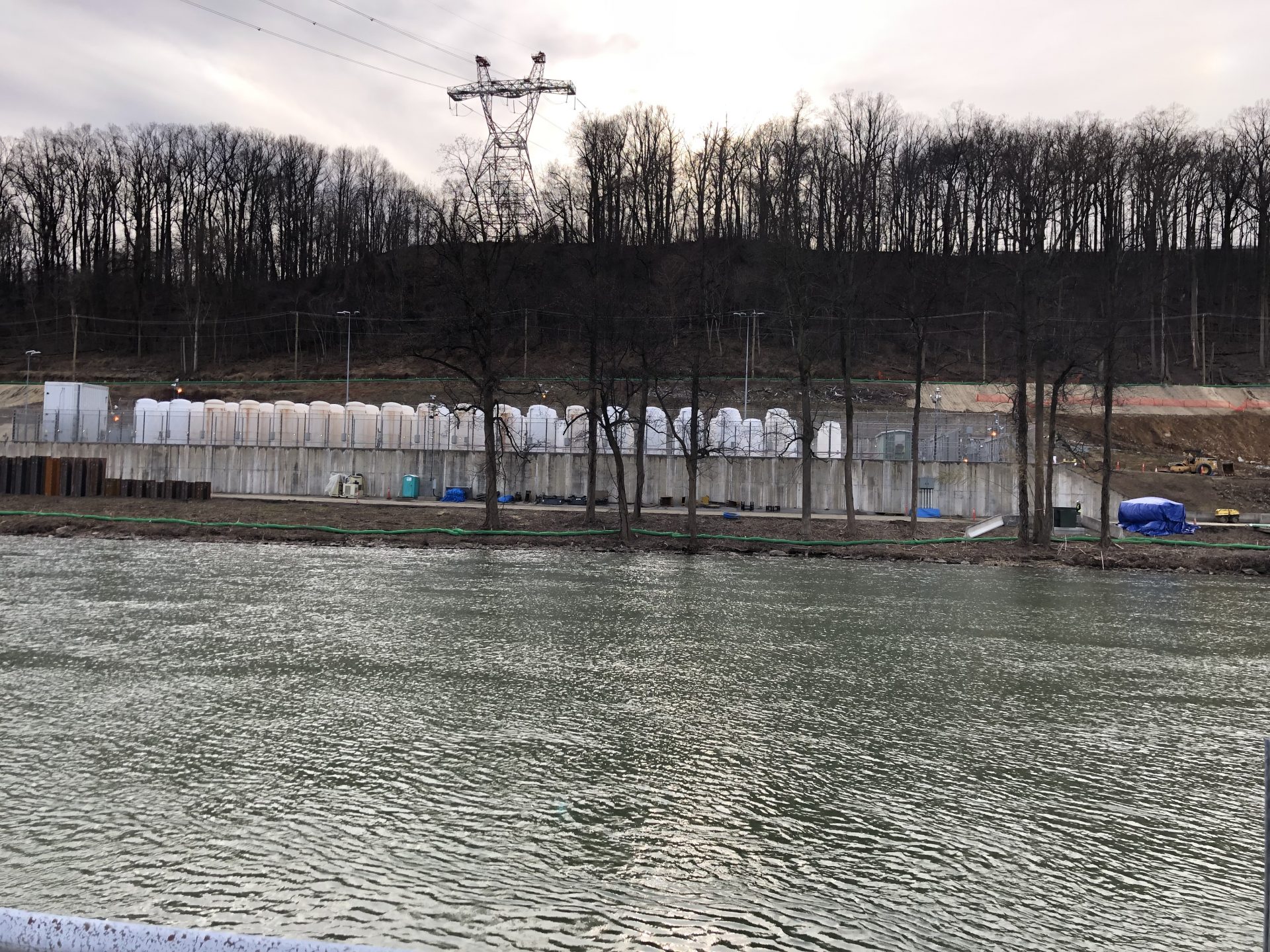
Ed Mahon / PA Post
A storage pad for spent fuel is seen on the grounds of Peach Bottom Atomic Power Station on Feb. 19, 2019.
After that, Navin said that while operators would prefer to have the spent fuel sent elsewhere, they have enough room on the Peach Bottom property to build more storage space.
Peach Bottom’s license renewal effort comes amid struggles for the nuclear industry. It has faced slowing demand for electricity and competition from cheaper natural gas, StateImpact Pennsylvania reported earlier this month.
Exelon has said it will close TMI this year. In western Pennsylvania, the operator of Beaver Valley Nuclear Power Station plans to close it in 2021.
Some lawmakers have argued that without changes in state law, Pennsylvania’s other three nuclear power plants — including Peach Bottom — would likely be in danger.
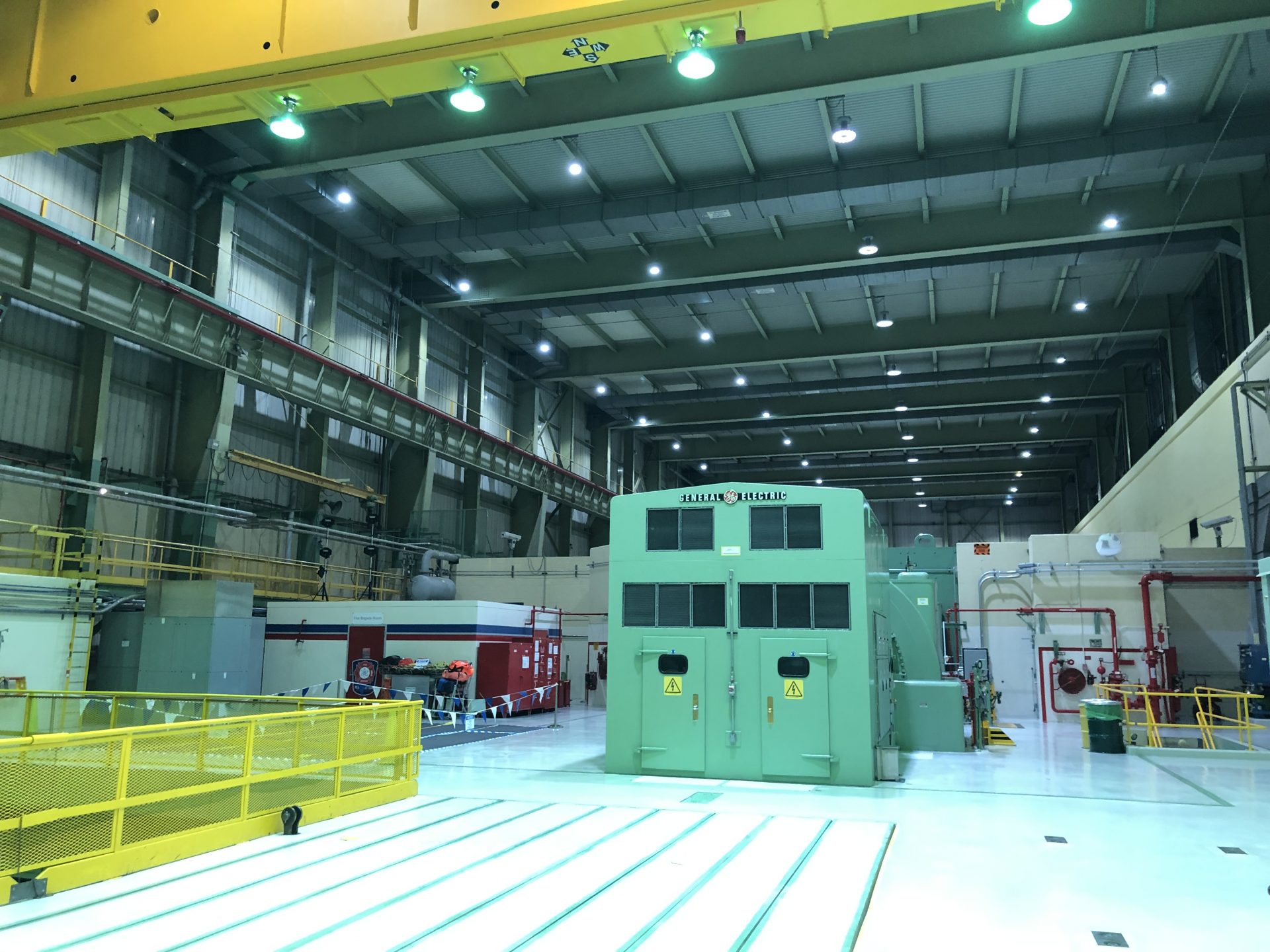
Ed Mahon / PA Post
The inside of the Peach Bottom Atomic Power Station is seen on Feb. 19, 2019.
On Tuesday, Navin referenced some of the larger challenges facing plants. He argued that jobs from natural gas wouldn’t make up for what would be lost if nuclear power plants close.
Peach Bottom’s nuclear plant has about 775 full-time employees. Navin described them as “highly well trained” and “well compensated.”
Those jobs and the impact they have on the community, he said, need to be part of the equation when people talk about nuclear power.

Ed Mahon / PA Post
Patrick Navin, site vice president at Peach Bottom Atomic Power Station, shows an old photo of the site while inside a building on Feb. 19, 2019.

Get insights into WITF’s newsroom and an invitation to join in the pursuit of trustworthy journalism.
The days of journalism’s one-way street of simply producing stories for the public have long been over. Now, it’s time to find better ways to interact with you and ensure we meet your high standards of what a credible media organization should be.